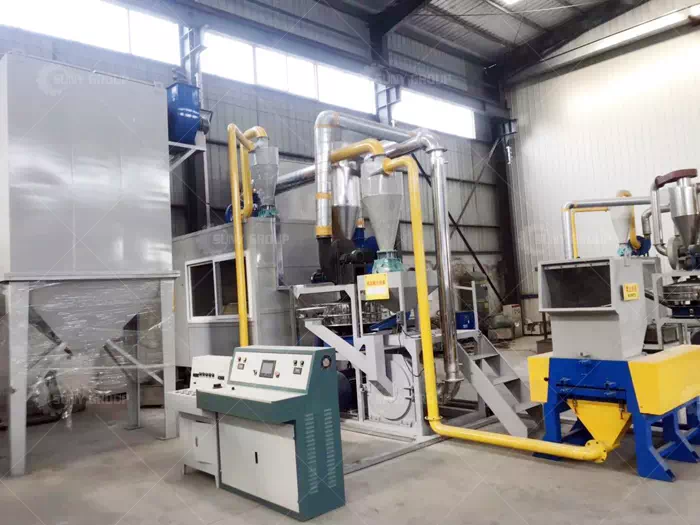Separating aluminum from plastic can be achieved through a variety of methods, depending on the specific properties of the material and the level of separation required. Here are three common methods for separating aluminum from plastic:
Density-based separation:
This method exploits the density difference between aluminum and plastic to separate them. The process involves the following steps:
a) Shredding and grinding: Aluminum-plastic composite materials, such as aluminum-plastic composite panels or packaging materials, are first shredded into smaller pieces and then ground to facilitate the next step of processing.

Aluminum plastic sorting equipment
b) Electrostatic sorting: The electrostatic sorting machine is a piece of equipment specially used to separate aluminum and plastic waste. The device uses electrostatic force to separate charged aluminum from non-charged plastic. The electrostatic separator has multiple sorting areas. The electric field generated by the high-voltage power supply causes the aluminum and plastic to be charged accordingly and then separates them based on the difference in charge. The sorted aluminum and plastic are collected in separate collectors for further processing and recycling.
Eddy's current separation:
Eddy current separation is an effective method when the aluminum part, such as an aluminum can or foil, is electrically conductive. The process involves the following steps:
a) Shredding: Shred the aluminum-plastic composite material into smaller pieces. There is no need for grinding here.
b) Eddy current separator: The chopped materials are fed to a high-speed moving conveyor belt. Eddy current separators generate rapidly changing magnetic fields that induce eddy currents in the conductive aluminum. As a result, the aluminum is repelled and transferred off the conveyor belt, while the non-conductive plastic continues to move along the conveyor belt.
c) Collection and further processing: The separated aluminum and plastic fragments are collected separately for further processing and recycling.
It is important to note that separation efficiency may vary depending on the specific material and quality of the separation equipment. Furthermore, these methods can be combined or tailored to the specific requirements of the recycling process. As a professional manufacturer of solid waste recycling solutions and equipment, SUNY GROUP has rich experience and complete technical support. If you need it, you can contact us at any time for consultation.
Thank you for your interest in suny group. If you want to learn more about our E-waste recycling plant, copper wire recycling machine and other machines, Contact us now to find out what we can do for you next project!E-mail:sunymachine@gmail.com | Whatsapp:+8613674945231